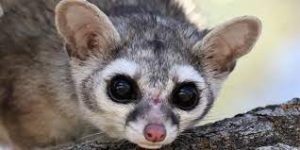The Ring-tailed Cat, scientifically known as Bassariscus astutus, is a fascinating yet relatively unknown creature that belongs to the raccoon family (Procyonidae). Despite its name, the Ring-tailed Cat is not a feline but rather a distant cousin of raccoons and coatis. In this blog, we will explore the intriguing world of the Ring-tailed Cat, including its appearance, behavior, habitat, and unique adaptations for survival.
I. Appearance: The Ring-tailed Cat is a small to medium-sized mammal with a slender body and a bushy tail, measuring about 30 to 42 centimeters in length. Its most distinctive feature is the alternating black and white rings on its tail, which play a vital role in its communication and social interactions.
II. Distribution and Habitat: Ring-tailed Cats are native to North America and are primarily found in the southwestern United States and Mexico. They inhabit a diverse range of ecosystems, including arid deserts, rocky canyons, and wooded areas, showcasing their adaptability to various habitats.
III. Behavior: Despite being primarily nocturnal, Ring-tailed Cats are occasionally active during the day. They are solitary creatures and are known for their elusive nature, making them challenging to study in the wild. However, they are not entirely elusive, as their distinctive calls, resembling a high-pitched bark, can be heard during the breeding season.
IV. Diet: The Ring-tailed Cat is an omnivorous creature with a varied diet. It feeds on a wide range of food, including insects, small mammals, birds, fruits, and vegetation. Their sharp retractable claws enable them to climb trees effortlessly, giving them access to food sources not easily reached by other animals.
V. Adaptations for Survival: Ring-tailed Cats possess several unique adaptations that aid their survival in their diverse habitats. Their keen sense of smell and excellent climbing abilities allow them to locate and access food efficiently. Furthermore, their ringed tail is not only a visual spectacle but also serves as a vital tool for communication, as they use it to signal dominance or submission during social interactions.
VI. Reproduction: Little is known about the reproductive habits of Ring-tailed Cats in the wild due to their secretive nature. However, it is believed that they have a mating season during early spring, with females giving birth to a litter of one to five offspring after a gestation period of approximately two months.
VII. Conservation Status: As elusive creatures, Ring-tailed Cats have not been extensively studied, making it challenging to assess their conservation status accurately. However, they are not currently considered endangered, and their populations appear stable in their natural habitats.
VIII. Interaction with Humans: Ring-tailed Cats are generally not a threat to humans and prefer to avoid human contact. They have been known to occasionally raid chicken coops or fruit orchards, which can lead to conflicts with farmers. However, these interactions are relatively rare, and efforts are made to promote coexistence with these fascinating creatures.
Conclusion: The Ring-tailed Cat, with its striking appearance and mysterious behavior, remains a captivating enigma in the natural world. As we continue to learn more about these elusive creatures, we gain valuable insights into the delicate balance of ecosystems and the remarkable adaptations that enable survival in diverse habitats. While the Ring-tailed Cat may not be as well-known as some other members of the raccoon family, its presence serves as a reminder of the rich biodiversity that graces our planet and the importance of preserving the natural world for future generations to enjoy.




















Add Comment